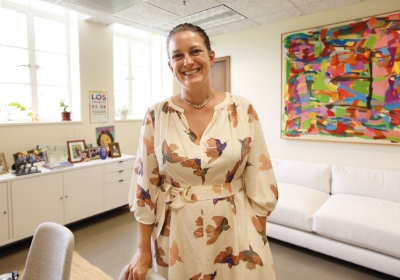CALIFORNIA IS A LOCKED-AND-LOADED BASTION of the Democratic Party. The 46.6% of state voters registered Democrat is nearly double the 24.4% who identify as Republican. The last time a GOP candidate won a statewide race was 18 years ago.
In Los Angeles, the lean to the left is even heavier. Just one of five county supervisors is a Republican. In the city itself, exactly zero of the 18 elected officials bear an R. Even being a former Republican can be an albatross — just ask Rick Caruso, who spent $109 million on his campaign but got trounced by Democrat Karen Bass.
Yet despite, or perhaps because of, all this, Los Angeles is slowly becoming a two-party city — just not in the way you expect.
Democrats dominate local politics, but there is an increasing challenge from the left. In the last two election cycles a trio of incumbent City Council members got bounced — before that it had been 18 years since a sitting council rep lost. There are serious challenges for two more council seats in this month’s elections.
City races are nonpartisan, and the new wing does not fall under a specific party banner. But local political observers clearly see the gulf, and the upstarts get a few different tags, among them Democratic Socialists, or even straight-up Socialists. Progressives may be the most common label, although the L.A. Times came up with the more-apt Super-Progressives. Whatever the term, since 2020 many voters have had more choice than just traditional centrist Democrats.
Why is this happening? Several reasons. The first stems from a change in voting dates. For decades city elections were held in odd-numbered years. Over time turnout dwindled to embarrassing levels — just 23.2% of voters participated in the 2013 mayoral runoff.
In 2015, elections were shifted to even-numbered years to align with state and federal cycles. This changed the face of the electorate, which had long been dominated by older, white voters who were disproportionately homeowners. The number of people lured by the chance to vote for governor or president made the rolls flush with a younger, diverse populace, including many more renters.
Consider consecutive races for City Council District 4: In 2015 about 24,000 people voted in the runoff election. In the 2020 runoff, nearly 133,000 cast a ballot.
That aligns with a second change: the emergence of a wave of candidates adept at social media and abetted by grassroots groups that seemed to have cracked the code for exciting young or disenfranchised voters. This can mean not only casting a ballot but volunteering to knock on doors or otherwise help out.
These candidates and groups share a progressive ideology. That can encompass many things but often is built on a couple cornerstones: less money for police and a desire to shrink the law enforcement ranks; and more resources direct- ed to housing and serving people experiencing homelessness, and a related aim to halt “sweeps” of tent encampments, even when their presence frustrates neighbors.
The first shift occurred in 2020, with the pandemic in full effect and in the wake of the George Floyd social justice protests (this came after progressive mold-breaking by Vermont Sen. Bernie Sanders and New York Rep. Alexandria Ocasio-Cortez). Although the District 4 was represented by David Ryu, a centrist Democrat and the first Korean American on the council, he was challenged by Nithya Raman, an urban planner born in India and educated at Harvard and MIT. Each sought to convince voters that they were the true progressive — I titled an article about the contest “Left and Lefter.” Raman rolled to victory.
On that same November ballot, county voters elected George Gascón as district attorney, opting for his modern take on criminal justice reform. Gascón, part of a national wave of progressive DA candidates, beat a more law-and-order incumbent.
More change followed. In 2022, veteran council members Gil Cedillo and Mitch O’Farrell were felled by, respectively, Eunisses Hernandez and Hugo Soto-Martinez, both first-time, far-left candidates who championed cutbacks in policing and railed against the city’s handling of the homelessness crisis.
The momentum continues. In March, Ysabel Jurado, a tenant rights lawyer who was endorsed by the Democratic Socialists of America-Los Angeles chapter, finished atop an eight-person field in District 14 and faces incumbent Kevin de León in the runoff. In the San Fernando Valley’s District 2, Jillian Burgos finished second, besting five other candidates, and is up against former state Assemblyman Adrin Nazarian. Both Burgos and Jurado are supported by another progressive, Kenneth Mejia, who was elected city controller in 2022.
None of this is to say that the greater Los Angeles political structure has shifted hard left. Mayor Bass is a mainstream Democrat who favors growing the police department. The council is dominated by traditional Dems. Residents of a Westside council district in 2022 rejected a progressive candidate.
Still, the change is undeniable. Republicans long lost political relevance in Los Angeles, but come election time, many voters today have an actual choice.
























